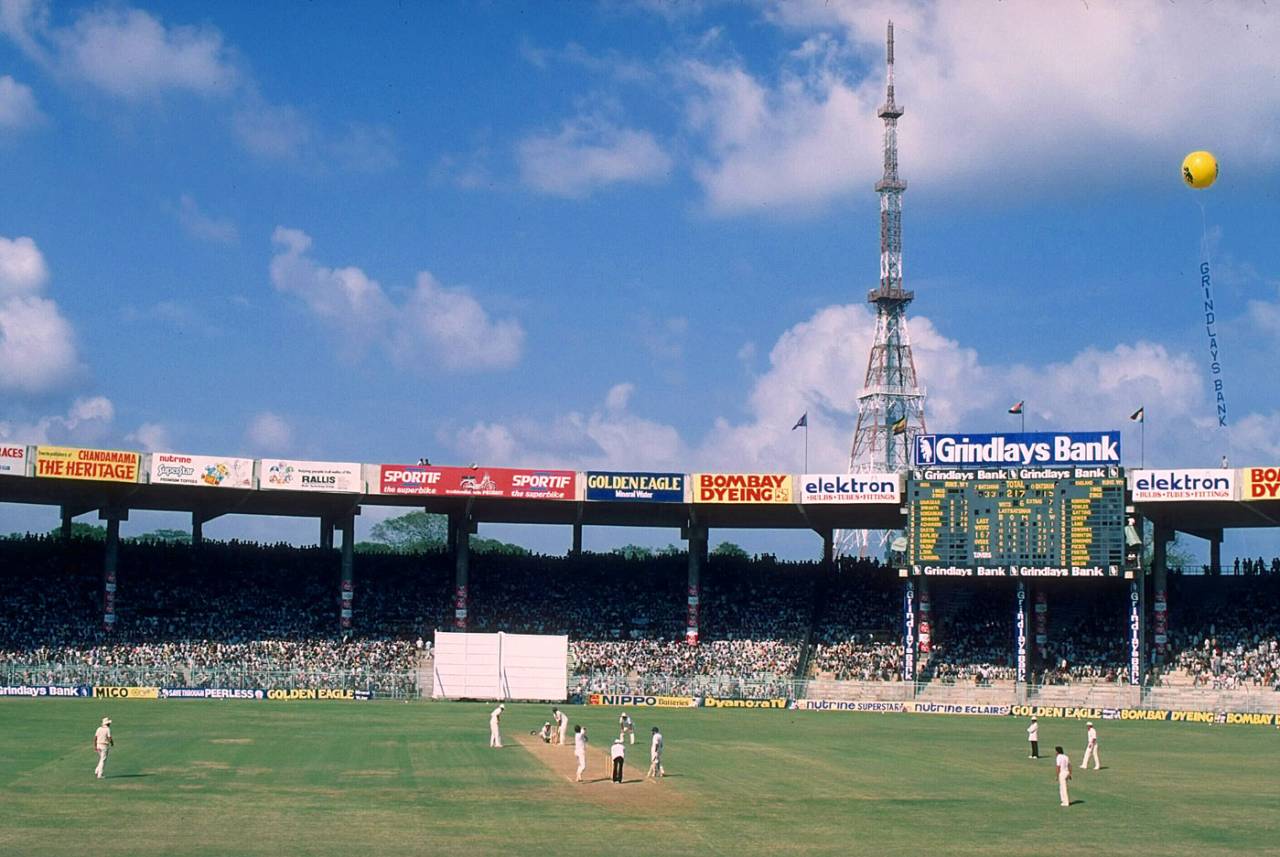Watching live Test cricket in India in the 1970s was often an ordeal. Huge and noisy crowds crammed into stadiums with minimal facilities and uncomfortable seating (just concrete platforms for those in the peanut gallery) made for a gruelling experience. Though cricket was a winter game in India back then, with the partial exception of venues such as Feroz Shah Kotla in Delhi, spectators elsewhere sweltered in the heat, with handkerchiefs, towels and newspapers serving as improvised sunshades.
My experiences as an avid cricket fan back then largely centered around
Chepauk in Madras (now Chennai), a city that for all its many virtues certainly had nothing that remotely resembled what one might call winter. In these days of empty stadiums for Test matches, it's hard to believe that lines would form at 7am or earlier as close to 50,000 people made their way into the ground. They were all ticket holders, but as there was no assigned seating in the cheaper stands, you had to get there early to guarantee yourself a good spot - defined as one with a clear view, and which let you escape the worst of the sunshine as the day wore on. Given the Neanderthal facilities, breakfast, lunch and tea (or rather, coffee) had to be packed into the multi-tiered tiffin carriers and thermos flasks. The shiny metal of these containers often created problems, as players would suddenly find a disconcerting glare emanating from the stands - until the erring object was spotted and put back into a cloth bag.
Food was an important element in lasting out the ordeal. While the top tiers of the carrier were for snacky foods like idli, dosa and vada, the middle and lower tiers were for the full three-course southern meal of sambhar rice, rasam rice and curd rice - or for variation, tamarind rice, lemon rice or tomato rice. Separate plastic bags containing crisp poppadams, banana wafers, pickle and water bottles completed the ensemble. Test matches at Chepauk often coincided with the harvest festival of Pongal, so delicious sweet rice or sakkarai pongal, garnished with ghee-fried cashews and raisins, was an added attraction.
The hidden support staff (generally mothers, wives, sisters and other women in the household) were experts at making the definitive thayir saadam (curd rice) largely with milk, laced with just a touch of yogurt. By lunchtime, the curd rice would have fermented to just the right degree of tartness within the tiffin. Timing things to perfection was not confined to the playing field but extended beyond to thousands of kitchens in the city.
As the crowd clapped in unison, Barry Wood broke out into an impromptu dance number, a highly energetic one, with his blond hair bouncing in sync
Quite often, usually about an hour or so into the second session, a mid-day torpor set in, accentuated by the starch-heavy lunches. The ubiquitous transistor radios would switch from the cricket commentary to Hindi music on All India Radio's "Manoranjan". Suddenly the stadium would be filled with the fabulous voice of Kishore Kumar or Lata Mangeshkar, with the crowd clapping in rhythm to the latest hits. The 1970s produced some of the most amazing Hindi film music and for many of us it served as the soundtrack to watching cricket. Given Madras' reputation as the centre of the anti-Hindi Dravidian movement, it's a bit surprising that my recollection of this period of cricket-watching involves mainly Hindi music and hardly any Tamil songs. I wondered what the players made of this spectacle in which they were suddenly no longer the main act, as it were.
On one such occasion in the
1972-73 series, England's
Barry Wood was fielding at deep midwicket when an especially lilting number filled the air. As the crowd clapped in unison, Wood broke out into an impromptu dance number, a highly energetic one, with his blond hair bouncing in sync. It was all the more remarkable considering the normally phlegmatic Wood was having a horrible tour and was certain to be dropped for the next Test. It seemed as if he had figured he might as well go down in style rather than just wait for the axe to descend.
If England has its Nelson moment, in Chennai and in South India generally, the crowds would begin chanting "Govinda, Govinda, Govindaaaaaa" when the score reached 111, as the three vertical lines evoked the symbol of Vaishnavite Hinduism. This chant would be kept up with much energy until the score moved on. During a Duleep Trophy match, if I recall correctly, it so happened that the Hyderabad medium-pacer Govindraj was bowling with the score on 111, lending added meaning to the chant.
It sounds astonishing now that tickets for Test matches were hard to come by then, and Chepauk routinely sold out long before matches began. To get good seats, especially in the coveted D stand, you had to have connections with those who played league cricket in Madras.
Back then, it was all about the cricket: you watched it during the day, held post-mortems on it in the evenings, read about it in the newspaper the next morning, and the cycle began all over again. Today, hardly anyone has the time or the passion for the longer version of the game to show this degree of commitment. And that may not, all things considered, necessarily be a bad thing.
Sankaran Krishna is a professor of political science at the University of Hawaii, in Honolulu. @SankaranKrishn
